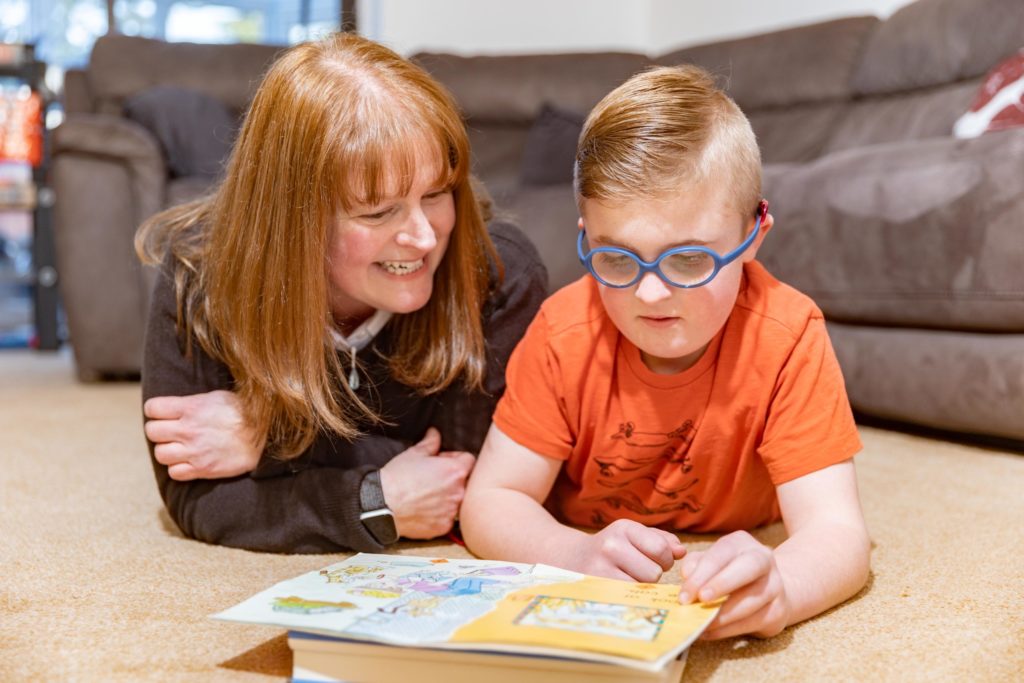Intensive Interaction
Learn what Intensive Interaction is, who uses it, how it works and what the benefits are.
How Sense can help
We offer free and impartial information about living with complex disabilities, including deafblindness.
We also offer services all over the UK, including day services, community support and residential care. Talk to our team to find out more.
Get in touch by phone, email, post or through a BSL interpreter.
What is Intensive Interaction?
Intensive Interaction is an approach to helping children and adults who are in the early stages of developing communication and social skills.
The approach is based on the way we observe and respond to the actions and noises of babies, and interpret these as communication. It helps a person and their communication partner to connect and enjoy each other’s company more.
It’s about watching closely how a child or adult responds to different situations through their body language, voice and facial expressions – and responding to this.
Intensive Interaction is two-way communication and can be used at all times in all environments.
Stay in touch

Get updates about our vital work, including volunteering, making a donation or supporting Sense campaigns.
Who is Intensive Interaction for?
Intensive Interaction can be useful for children and adults with:
- Severe and complex learning difficulties.
- Very severe learning difficulties.
- Profound and multiple learning difficulties.
- Multi-sensory impairments.
- A diagnosis of autism spectrum disorder.
- A range of self-stimulatory or socially isolating behaviours.
- A learning disability.
- Behaviour that challenges.
- Late-stage dementia.
It can also be useful if a child or adult is highly social in many ways, but still needs to develop social skills in:
- Using and understanding eye contact and facial expressions.
- Taking turns in sequences of social behaviour.
- Developing use of vocalisations.
Intensive Interaction is an approach that can be used by everyone involved in supporting a child or adult to interact with other people and develop communication skills in a natural, relaxed and enjoyable way.
This includes:
- Speech and language therapists.
- Care staff.
- Occupational therapists.
- Family members and friends.
- Anyone working for the well-being of people with communication needs.
Before you read on…
- You can communicate using a mix of different ways. (We all do!)
- At Sense, we use whatever combination of speech, touch, sign or visual language works best.
- It’s never too late to start.
- Have a go and don’t worry about getting it wrong.
How does Intensive Interaction work?
Whether you are a health or social care professional, parent, family member or friend, it’s important to understand the principles of Intensive Interaction:
- Focus on the person you’re supporting and put aside any thoughts or preconceived ideas of your own.
- Adjust your own approaches/behaviour/voice to appear less threatening.
- Observe what their body language is telling you.
- Treat everything the person you’re supporting does as if it’s communication.
- Use timing and rhythm in the interactions, which can lead to games, anticipation and turn-taking.
- Rather than always mimicking exactly, use slight variations and have fun!
Meet Megan

“This picture shows me using Intensive Interaction with Megan, who has complex disabilities, to have a conversation using hands and voice. I say, ‘Megan’ as I take her hands and place them on her chest. Megan nods and pushes her hands back to me.”
Laura, Sense children and family support worker
Other types of communication
These are the main ways of communicating that we use:
-

Using touch
- Braille uses raised dots to touch.
- Deafblind Manual spells words on to your hand.
- Block alphabet spells letters on to your hand.
- Moon uses raised lines, curves and dots to touch.
- Tadoma uses lipreading by touch.
- Hand-under-hand signing using touch.
-

Using signs
- Sign language.
- Makaton, a simpler version of sign language.
- Visual frame signing for people with reduced vision.
- Objects of reference
-

Using speech
-

Also
- Non-formal communication without speaking, writing or signing.
This content was last reviewed in April 2023. We’ll review it again in 2025.
